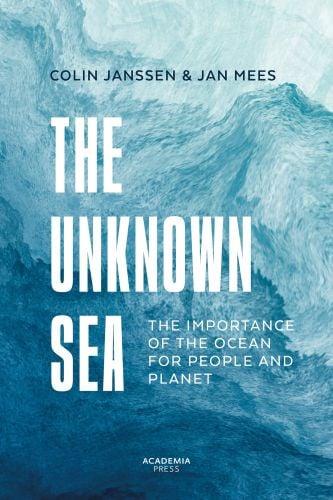




It is often said that we know more about the surface of Mars than about the ocean. This is something that the United Nations aim to improve through the UN Decade of Ocean Science for Sustainable Development (Ocean Decade). As an officially endorsed product of the Ocean Decade, this book highlights all that we know and still need to know about the importance of the ocean for the comfort of humanity.
Improving our understanding of the ocean is also part of the mission of the European Marine Board (EMB), of which I have had the privilege of being the Executive Director for the past seven years. The EMB bridges the gap between marine science and policymakers, ensuring that our documents provide European policymakers with the latest marine knowledge in a format they can digest. As such, I am always editing documents on the newest aspects of marine science, which is where the privilege comes in. I get to constantly learn new things about the ocean, even though I have studied marine ecology and worked as an ecosystem modeller for more than 30 years. Since I started at the EMB, I have been educated in subjects such as the importance of the ocean for the oxygen we breathe (as is described in ‘Birthplace of Life on Earth’, pp. 39-41, also see European Marine Board Future Science Brief 10), and the marine geohazards that lie under the sea, and
of which we know very little (see ‘Chalk Cliffs and Drowned Lands’, pp. 32-35, also see European Marine Board Position Paper No 26). The Unknown Sea also highlights the importance of the ocean for addressing the impacts of climate change (see EMB Position Paper 27), for keeping Earth habitable for humanity, but also for helping with other aspects of human health, such as mental health and well-being (EMB Policy Brief 8). It also gives an overview of the importance of the ocean for the discovery of new medical substances and highlights that the ocean has been taking up a significant part of the nutrient and plastic pollution that humans have produced.
The Unknown Sea is written by Prof. Colin Janssen from Ghent University and Prof. Jan Mees, who is the Director of the Flanders Marine Institute (VLIZ), which hosts the EMB. So I was confident that the book would be well researched and well written, but when I started reading the Dutch version of this book, it was mostly as a way to improve my Dutch. I did not really expect to learn a lot about the ocean, but I was wrong. I got a very good overview of the history of oceanography and marine science in general. There was also a nice reminder of the different explorers, which took me back to some historical ecosystem reconstruction work I did during my scientific career. It also gave me a good overview of the importance of my current hometown, Oostende, as the first place a marine station was established.
Prof. Dr. Sheila JJ Heymans FRSB
Executive Director of the European Marine Board
Professor in Ecosystem Modelling, University of the Highlands and Islands and Scottish Association for Marine Science, Scotland

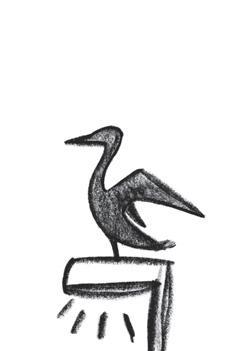
“To stand at the edge of the sea, to sense the ebb and flow of the tides, to feel the breath of a mist moving over a great salt marsh, to watch the flight of shorebirds that have swept up and down the surf lines of the continents for untold thousands of years, to see the running of the old eels and the young shad to the sea, is to have knowledge of things that are as nearly eternal as any earthly life can be.”
RACHEL CARSON
Humans are terrestrial animals. What happens in the ocean is, in large part, invisible and inaccessible to us. We are awed by tall mountains and endless seas, but many of us do not know that the tallest peaks lie submerged – we simply do not see them. Vast and mysterious, the ocean can be a source of inspiration and peace, yet it can also be intimidating and even terrifying. In the past, a sailor’s ‘farewell’ was often a definitive goodbye.
Cartographers used to have a term for unmapped land: terra incognita. They also had a term for uncharted waters: mare incognitum, unknown sea. They would sometimes portray mythological creatures at the ends of the Earth to fill the gaps in
their knowledge of the world. Today, most of the Earth’s land mass has been explored. Our gaze now turns to other planets and moons, where space probes scrape extraterrestrial dust from their surfaces to expose their secrets. Our curiosity drives us ever further into the darkness of space, towards distant star systems and planets. But our knowledge of the ocean lags behind; we know more about the surface of Mars than about the depths of our ocean. These waters are Earth’s final frontier of exploration and discovery.
Because of this gap in our knowledge, we underestimate the importance of the ocean for the planet and, in turn, for humankind. During lectures, lessons and interactions with the press and educators or policymakers, as well as people from various industries, coastal residents, and of course ‘inlanders’, we see time and time again that the sea remains a source of fascination but that our knowledge of the crucial role it plays in our lives is severely limited. We want to change that. We wrote this book about the sea to make the latest scientific insights accessible to anyone interested in this fascinating world that begins at our shores.
As a marine scientist, you experience unforgettable moments: your first night on board a fishing or research vessel, a terrifying storm, sea and land sickness, taking samples at night, an incredible catch, your first encounter with an iconic marine animal, coming face to face with an octopus while snorkelling. And all the while, there is the wondrous light both above and below the sea’s surface. We hope that you, as a reader, feel that same sense of wonder that has inspired us to – literally and figuratively – take the plunge and dive deep into the ocean.
Moreover, we want to convince you of the importance of the ocean for the continued existence of all life, including human life – not with an accusatory finger, but by sharing with you the most recent discoveries in the marine sciences and by inspiring a sense of awe when it comes to the sheer complexity of what we do not know.
In writing this book, we asked ourselves: what would people like to learn about the sea, including all those things they do not even know they want to learn? What does the sea do for us, and what do humans do to the sea? What has the sea meant to people and our planet in the past, what is happening today, and what do we hope to see in the future? This book is not an encyclopaedia or a reference guide; we are not striving for comprehensiveness. We want to provide the reader with what we hope is an enjoyable introduction to a world that is very precious to us, a world that is both valuable and vulnerable, and is sadly under pressure today.
Ever since childhood, we have loved to walk along the tideline on the beach, shifting our gaze from the timeless, ever-changing sea to the crunching of shells beneath our feet. We would collect wentletraps, cockles, and wedge clams to buy handmade tissue-paper ‘beach flowers’. It was our first introduction to the world of economics with its laws of supply and demand. That tideline from our youth no longer exists. The original fauna is still there, but now you find new shell species washed up on the shore from ocean-going ships or aquaculture farms. The plastic waste cluttering up the shoreline is also new.
That does not mean all is bad news. You see far fewer oil slicks and oil-coated birds worldwide than you used to. Dumping radioactive waste in the ocean is illegal nowadays, and less unfiltered wastewater flows to the sea. And, with the growing urgency of such problems, policymakers have established fishing quotas, designated protected areas, and – in most places – prohibited whale fishing.
Still, in general, we continue to head in the wrong direction, and the negative consequences overshadow positive developments. In 2022, António Guterres, the secretary-general of the United Nations, declared an ‘ocean emergency’ – an emergency purely due to our pernicious influence as humans. The biggest threats are the fishing industry, pollution from land-based sources, and climate change.
What makes this problem so complex – and fascinating – is that everything in the ocean is inextricably linked. Moreover, these waters are, in turn, closely connected to the air and the land; the threat faced by one is felt by the other. This connectivity is a key theme throughout this book.
The combustion of fossil fuels on land leads to global ocean warming, seawater acidification, and ocean oxygen depletion. Melting ice caps in the north and the increasing instability of the ice caps around Antarctica – another consequence of global warming – will cause a global rise in sea levels. A strong El Niño (an intriguing weather phenomenon that we will address later) off the west coast of South America leads to heavy rainfall and mudslides in the Andes mountains and extreme drought in Australia and Indonesia. Air and sea currents carry our pollutants to the farthest corners of the ocean. We discover microplastics everywhere we look, even in the most elusive deep-sea organisms.
Still, the ocean is surprisingly robust. Its immense volume allows it to store enormous amounts of plastic, chemicals, carbon dioxide (CO2), and excess heat. We have always been able to depend on the ocean and, as long as the planet exists, it will continue to exist. But there are limits to this capacity. The ocean may be vast, but that does not mean we should not protect it. And, because it is so enormous, we cannot ignore or neglect it.
Earlier, we referred to the ocean as the final frontier of science here on Earth. Unfortunately, in practice, it is often also the ‘Wild West’. Despite the introduction of several important treaties, such as the UN Law of the Sea Convention in 1982 or the more recent UN High Seas Treaty, there is too little actual legislation, and life at sea is mostly fair game. In many so-called protected areas today, fishing is still allowed. Meanwhile, it is becoming increasingly apparent how detrimental biodiversity loss is to our ocean – and to us.
And yet, there is reason for optimism. Cutting-edge technologies and the latest scientific insights could contribute to the solution. Through the development of submersible robots, sonar systems, underwater cameras, novel sampling devices, and sensors, we should be able to access the unknown depths and the life that flourishes there. Developments in molecular biology and information technology have brought us insight into the richness of microscopic life and the functions of marine biodiversity.
All those developments have given us the tools we need to deal with the enormous challenges rising out of the water like a giant wave: the decline in biodiversity, climate change, and the pollution of our planet. We do not know for certain wheth-
er technological evolution will be enough to turn the tide. Perhaps we will have to start living differently as well. But we can be quite certain that, without this technology, we are doomed to fail.
The upside is that people finally realise that something needs to be done. The United Nations declared 2021–2030 as the Decade of Ocean Science for Sustainable Development (the Ocean Decade). At the start of that decade, a promise was made to quickly establish an operational observation system, to fill in the gaps in our knowledge and to agree on the necessary protection and recovery measures.
“La mer, le grand rassembleur, est le seul espoir de l’homme. Maintenant, comme jamais auparavant, l’ancienne phrase a un sens littéral : nous sommes tous dans le même bateau.”
Why are we writing this book? We have already mentioned that we share a love of the sea. It began with our natural curiosity as children and later blossomed into a professional interest. Colin is the grandchild and descendant of many generations of fishermen and seafarers and grew up in a quintessential fishing neighbourhood in Ostend, Belgium. Jan is the grandson of a Greek seafarer who settled in the Antwerp shipping quarter after falling in love with a girl who also had her roots on the Homeric island of Ithaca. He grew up in Lier, but the port of Antwerp and the mighty Scheldt River, where his parents earned their keep, formed the backdrop of his youth.
We discovered that, as eighteen-year-olds, we both shared a moment of doubt when we were trying to decide whether to attend a maritime college or get a degree in biology at university. We both decided on the latter, and it was no coincidence that we both specialised in Marine Biology at the University of Ghent, where we would later become professors. Our paths crossed again later at the Flanders Marine Institute (VLIZ) in Ostend, where Colin serves as director of the scientific board and chairman, and Jan holds the position of general manager.
Jan’s doctoral thesis was about North Sea opossum shrimp, excellent swimmers that live near the sea floor and are an essential food source for bottom-dwelling fish. He later went on to study tropical fish in East Africa, and his involvement in key international marine-science networks turned him into a generalist with a helicopter view of new developments in oceanography.
Colin has devoted his career to researching the effects of pollution on aquatic ecosystems; he is internationally renowned for his award-winning research into microplastics, a study which Jan also contributed to. He is one of the ’highly cited’ researchers at the University of Ghent. His current focus is on a new research field: the positive effect of the sea on human health.
We became good friends over the years. And, through our work at the University of Ghent and the Flanders Marine Institute (VLIZ), for the last forty years we have both had front-row seats to new developments in the marine sciences. We read each other’s publications and act as a sounding board for each other’s ideas, some crazier than others. Our most-cited coauthored paper, which we came up with during a business trip to Mombasa in Kenya, concerns the discovery of microplastics
in the deep sea. This book is the result of our long friendship, our countless conversations about the sea, and our scientific partnership, which has spanned many years.
The spirit of teamwork and fellowship is what makes marine science so unique for us. It is an internationally wellorganised, friendly community that is quick to pick up on new developments, including the latest technologies and openscience principles, a practice through which knowledge is shared quickly and democratically. Perhaps that has to do with the complexity and inaccessibility of the subject matter itself: the sea. As a marine scientist, you are dependent on a shared research infrastructure and also on each other. You have to be ready to give each other a helping hand during long sea voyages, sometimes in extreme conditions. We think this has made us better people. Or maybe the sea just attracts a certain type of person.
People who are in the same boat rely on each other and share responsibility. And, by extension, this applies to all of us as temporary residents on this planet as it whizzes through the immense expanse of space. As long as there is no planet B – and even if there was – we have no other option but to care for the Earth, our planet, and the largely undiscovered ocean covering its surface.
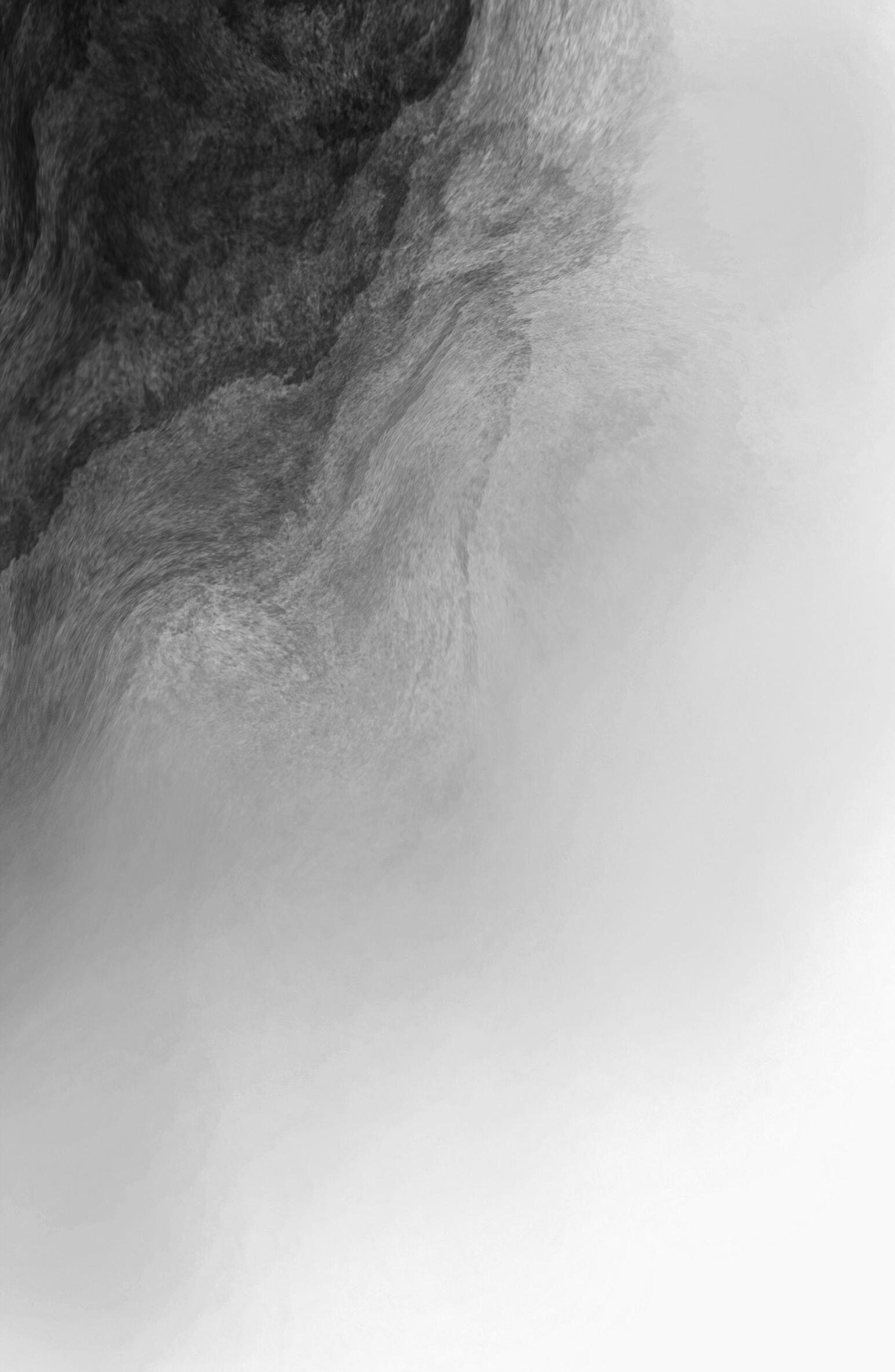
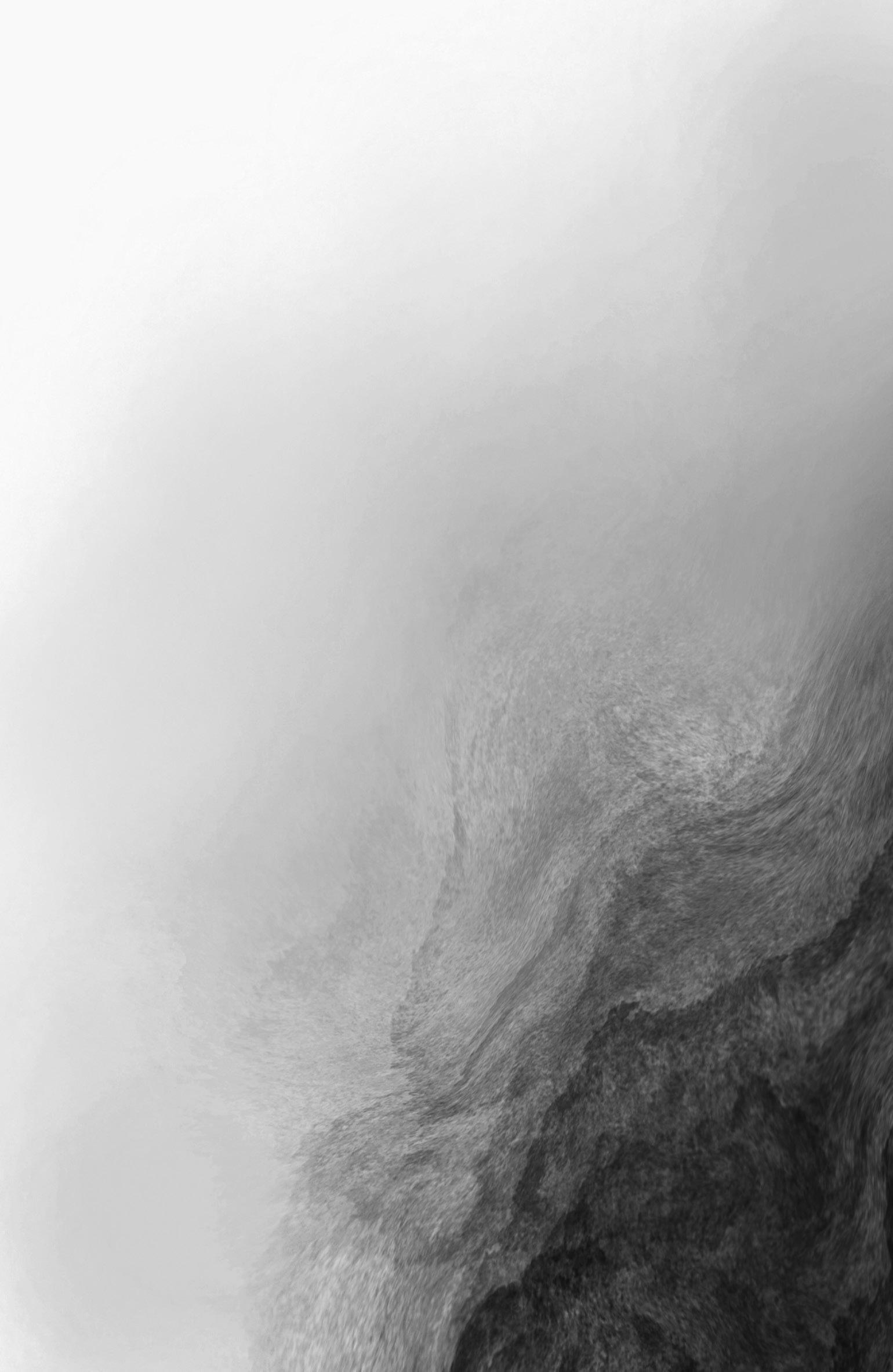

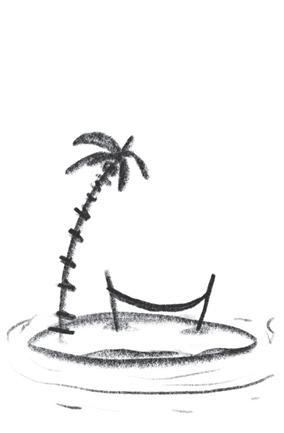
“How inappropriate to call this planet Earth when it is clearly Ocean.”
ARTHUR C. CLARKE
Apale blue dot. That is what the Earth looks like in the famous image taken in 1990 by the Voyager 1 space probe, billions of kilometres from our planet. You can barely see it; that is how insignificantly small it is. The astronomer Carl Sagan used this image as the title for his book Pale Blue Dot, in which he questions the hubris of humankind while urging us to cherish our place in the universe. We are not special, especially in the context of the immeasurable expanse of galaxies and twinkling stars. Everything we love or hate, all our ambitions and desires, everything that we care about takes place on that single pale blue dot.
Although the colour of our planet at such a distance is partly determined by the refraction of sunlight on our atmosphere – the reason why the sky is blue – it is no coincidence that we refer to it as the ‘blue planet’. And that becomes even clearer if we imagine ourselves on a spaceship travelling through our
solar system as we approach the Earth. In The Blue Marble, a photo of the Earth taken by the Apollo astronauts in 1972 from ‘just’ 29,000 kilometres away, we can clearly see how important water is to our planet: 71% of the Earth’s surface is covered by ocean, a total of 361 million km².
As our imaginary spaceship draws closer and races over the ocean’s surface, we would still be tempted to think that that giant body of water is nothing more than a dull, flat, twodimensional plane. That is how many of us see the ocean. To dispel that view, we need to dive deep into this unimaginably large mass of water that has a volume of over 1.3 billion cubic kilometres and accounts for over 99.8% of all the habitable space on the planet.
Before we start to explore the obscure corners of the ocean, it is helpful if we first get a general idea of the ocean’s most important characteristics. We will introduce you to seven principles drawn up by marine scientists and adopted by UNESCO to teach ‘ocean literacy’. These principles will provide us with the right tools to continue our voyage on and under the water, from the coastal areas towards the deep sea, and help our eyes adjust to the dark world submerged beneath the surface.
The first principle: Earth has one big ocean with many features
In 1992, the Ever Laurel, a container ship travelling from China to the United States, got caught up in a violent storm. Twelve containers tumbled into the sea. One of those containers contained unusual cargo: bath toys. No fewer than 28,000 rubber
ducks and other plastic bath toys found their way to freedom, bobbed up and down in the rough seas, and started their long journey landwards. Many ducks reached the coast of Alaska. Some continued onwards to Japan, while others traversed the northern Bering Strait and were trapped in frozen polar ice before continuing their adventure and crossing over to the Atlantic Ocean. Rubber ducks were found both on the east coast of the United States and in Great Britain.
Although this was, strictly speaking, a worrisome case of pollution, scientists learned much about how plastic travelled around the world on ocean currents. For oceanographer Curtis Ebbesmeyer, these friendly floatees’, as the bath toys were called, were a golden opportunity. Together with his friend Jim Ingraham, with whom he had carried out earlier research into Nike trainers that had fallen into the ocean, he called upon citizen scientists to collect as much data as possible. This gave them a better overview of the complex surface currents connecting the world’s seas and ocean basins.
These globetrotting bath toys also made it very clear that the ocean is, in fact, one big whole. That is why we authors usually refer to ‘the’ ocean, often synonymous with ‘the sea’, which makes sense when you look at it from space. The five oceans we learned about at school should technically be called basins of that one ocean: the Atlantic, Pacific, Indian, Arctic, and Antarctic basins are all connected. Moreover, for practical reasons, we also distinguish between several smaller seas – their geographic indications certainly have their uses – but here too it is also impossible to define clearly demarcated boundaries.
To fully understand the concept of one ocean, we must refer to an illustration particularly close to our hearts: the